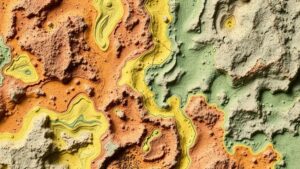Prompting AI to Extract Relic-Related Clues from Early Archaeological Reports
Prompting AI to Extract Relic-Related Clues from Early Archaeological Reports
The application of Artificial Intelligence (AI) within the realm of archaeology shows significant potential, particularly in extracting relevant clues from early archaeological reports. This paper examines the methodologies for using AI in analysing historical documents and the implications for advancing archaeological knowledge. By employing natural language processing (NLP) techniques, researchers can integrate vast amounts of data, which were previously inaccessible or laboriously extracted by hand, into a comprehensive analysis of early archaeological findings.
The Historical Context of Archaeological Reporting
Archaeological reports have a rich history dating back to the late 19th century. Early excavations conducted by figures such as Heinrich Schliemann at Troy (1870-1890) and Sir Arthur Evans at Knossos (1900-1905) produced extensive documentation of findings. The methods of documentation in these early reports often featured an unstructured narrative style, making the extraction of specific information challenging.
For example, Schliemanns reports included detailed descriptions of layers and findings, yet the information is often dispersed throughout the text. As a result, traditional analysis methods impose limitations on our ability to systematically extract relevant data regarding artifacts, their contexts, and their significance.
AI and Natural Language Processing in Archaeology
With advancements in Natural Language Processing (NLP), AI technologies are now equipped to handle vast amounts of text data efficiently. NLP enables machine learning models to recognize patterns, meanings, and relationships within texts. These capabilities can particularly enhance the analysis of early archaeological reports. The application of machine learning algorithms allows for the extraction of salient features through techniques such as Named Entity Recognition (NER), which identifies and categorizes entities such as artifacts, locations, and temporal references.
- Named Entity Recognition (NER): NER can identify significant items within a text, enhancing the ability to categorize artifacts, locations, and dates.
- Sentiment Analysis: Evaluating the tone of early reports can provide insights into the attitudes of archaeologists toward certain finds.
Case Studies: Practical Applications of AI in Archaeology
Research projects have recently demonstrated how AI can efficiently analyze early archaeological documents. For example, AI-driven projects aimed at digitizing the archive of Sir William Flinders Petrie, a pioneer in Egyptology, have revealed new insights into ancient Egyptian artifacts. By employing machine learning techniques on Petries extensive notes and reports from 1880 onwards, researchers can identify patterns in artifact distribution and their relationships to different socio-cultural contexts.
Another example involves the work done on the excavation reports from Pompeii. By applying AI techniques to these historical documents, researchers have managed to uncover previously overlooked connections between the distribution of artifacts and specific social practices in the ancient city. This has led to a more nuanced understanding of the social landscape of Pompeii just before the catastrophic eruption of Mount Vesuvius in 79 AD.
Benefits and Limitations of Using AI in Archaeological Report Analysis
While the integration of AI and NLP presents numerous advantages, it is essential to recognize the limitations. The primary benefits include:
- Scalability: AI can process large volumes of text rapidly, allowing researchers to cover more ground and focus on critical analysis rather than data extraction.
- Uncovering Hidden Patterns: AI facilitates the discovery of interconnections and trends that may have been missed through traditional methods.
But, there are challenges to consider:
- Data Quality: The historical context and language used in early reports can affect the accuracy of AI outputs due to variations in terminology.
- Interpretation Bias: AI systems can inadvertently perpetuate biases present in the datasets they are trained on, which may impact conclusions.
Conclusion and Future Directions
To wrap up, the integration of AI to extract relic-related clues from early archaeological reports offers substantial potential for advancing the field of archaeology. By enhancing data extraction processes through methods such as NLP and machine learning, researchers can glean new insights from historical documents, ultimately leading to a deeper understanding of past societies. But, as with any technological advancement, it is crucial to address the limitations and potential biases in AI systems to ensure the integrity of archaeological interpretation.
Future research should focus on refining AI methodologies for better accuracy, as well as developing standardized protocols for analyzing historical documents. Collaborative efforts involving archaeologists, data scientists, and historians will further enrich this interdisciplinary approach, paving the way for more comprehensive archaeological explorations.

